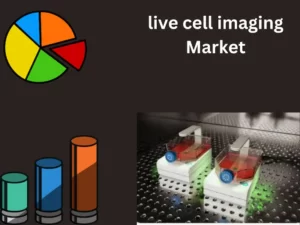© 2021 All rights reserved
Datavagyanik- Your Research Partner

The global Live Cell Imaging Instruments Market size in is 2021 expected to be $1.2 billion and is expected to grow at 8% CAGR during the period (2022-2025). The global Live Cell Imaging Instruments Market is segmented into North America, Europe, APAC & Rest of the world.
The research report titled “Live Cell Imaging Instruments Market, Business and Opportunity Analysis” published by Datavagyanik presents a detailed analysis of the Live Cell Imaging Instruments Market with country-wise market statistics, qualitative insights, and market player analysis. One of the prime objectives of the report is to provide an assessment of the market potential, market revenue, growth and business opportunities for Live Cell Imaging Instruments Market in each country.

North America Live Cell Imaging Instruments Market size is expected to be – million and is expected to grow at a CAGR of –% during the period 2021 to 2028. US & Canada will drive the most of the revenue in the region. North America has a huge chunk of global market.
Europe Live Cell Imaging Instruments Market Size is expected to be—million and is expected to grow at a CAGR of –%. APAC Live Cell Imaging Instruments Market Size is Expected to grow at a CAGR of –.
Live cell imaging is a powerful tool for studying cellular processes and determining the effects of various treatments on cells. Many different types of live cell imaging instruments are available on the market. Each has its unique capabilities and applications. This article will closely examine some of the most popular live cell imaging instruments, their key features, and the latest market trends.
Live cell imaging is a cutting-edge biological imaging technique that enables researchers to observe dynamic changes in the internal structure of live cells. As a result, scientists can better understand their behavior over a biological process by observing living cells at a single-molecule resolution and in real-time. This unprecedented window into the inner workings of living cells has allowed us to further our knowledge of cell division, gene expression, cellular metabolism, and more. Furthermore, this technology has had widespread implications for medical research, providing clinicians with unprecedented insight into disease mechanisms and drug efficacy. In short, live cell imaging is revolutionizing our understanding of biology and ushering in a new era of biomedical science.
Live cell imaging is an essential tool in the modern scientific community as it helps to study cellular processes efficiently. It is typically used to observe movement, changes in components, and interactions of living cells under a microscope without damaging them. Several types of instruments are used for live cell imaging, including optical microscopes – both brightfield and fluorescence; scanning electron microscopy (SEM); atomic force microscopy (AFM); confocal laser scanning microscopy; and nonlinear optical techniques such as second harmonic generation imaging. Each of these instruments is designed to provide scientists with accurate data while also making it possible to monitor cells over considerable periods. In addition, by combining image signals from different types of instruments, researchers can gain insights into individual cells’ behavior and survival capacity, which can help further develop treatments for various diseases.
Live cell imaging is changing the scope of research and practice across many different fields. From deciphering bio-interactions for medical development to exploring the inner workings of cells for agriculture, this technique has pushed longstanding inquiry and improvisation to new heights. It allows researchers to observe how cells respond naturally within a 3-dimensional environment, making it possible to understand the progress of intricately connected networks in conditions that resemble their natural states. Furthermore, live cell imaging helps capture information about processes that are otherwise too small or transitory to observe by viewing various cellular activities in real time rather than after any transformations occur. This technology is currently being used to uncover more knowledge about how diseases arise and function on a cellular level and optimize crop productivity while safeguarding ecological sustainability. Then, live cell imaging has applications across various disciplines, ensuring its continued importance in advancing biology into the future.
Live cell imaging instruments are essential tools for life science research, helping to diagnose diseases, understand cell functions and behavior, and visualize metabolic activities. Analyzing market trends for them is a complex task requiring in-depth knowledge of the technology. The rise of sophisticated technologies such as quantum dots and mass spectrometry has also driven trends in the live cell imaging instrument market, with demand increasing as facilities strive to keep up with technological advancements. Moreover, investing in high-precision microscopes that utilize sophisticated algorithms and software can aid researchers in producing novel results. Price competition across manufacturers has intensified due to increased demand and competition among suppliers, while biopharmaceutical companies provide additional long-term opportunities in the sector. As a result of these dynamic forces, live cell imaging instruments remain an essential technology for life sciences research.
The report analyzes Live Cell Imaging Instruments Market from the demand as well as the supply side. In supply-side analysis, we reach out to the Live Cell Imaging Instruments Market players to collect information on their portfolio, revenue, target customers, and other insights. During this process, paid interviews and surveys are conducted for obtaining and validating the data pointers. We also deep dive into the available paid industry databases, research studies, white papers, and annual reports.
As a part of our demand-side analysis, we reach out to the end-users of the Live Cell Imaging Instruments Market, to gauge the application areas, demand trends, and similar insights.
This business analysis report on the Live Cell Imaging Instruments Market presents a regional as well as country-level analysis. The regions covered in the report are – North America, Europe, Asia Pacific and Rest of the World. In these four regions, all the countries have been covered in detail with information on Live Cell Imaging Instruments Market size, trends, and forecast.
The report covers Live Cell Imaging Instruments Market revenue and forecast for the period (2021 – 2028), by regions, (further split into countries):
| Year | 2021 | 2022 | 2023 | 2024 | 2025 | 2026 | CAGR (2021-2028) |
| Live Cell Imaging Instruments Market Revenue ($Million) | XX | XX | XX | XX | XX | XX | XX |
| Total | XX | XX | XX | XX | XX | XX | XX |
*Note – Country-level break-down has been covered in the report
Some of the market players covered in the report are listed below
There is an entire data collection and validation framework that Datavagyanik follows to provide you with authentic information. We connect to industry experts across various countries to understand market trends and demand pattern. The same is done through paid interviews and surveys.
Our internal team of analysts is experts in studying market patterns, mining data, and extracting useful information from different paid as well as freely available sources. Datavagyanik has an exhaustive internal database with information on markets, market players, and other macro and micro economic indicators that impact industries.
“Every Organization is different and so are their requirements”- Datavagyanik







© 2021 All rights reserved
Datavagyanik- Your Research Partner
Add the power of Impeccable research, become a DV client